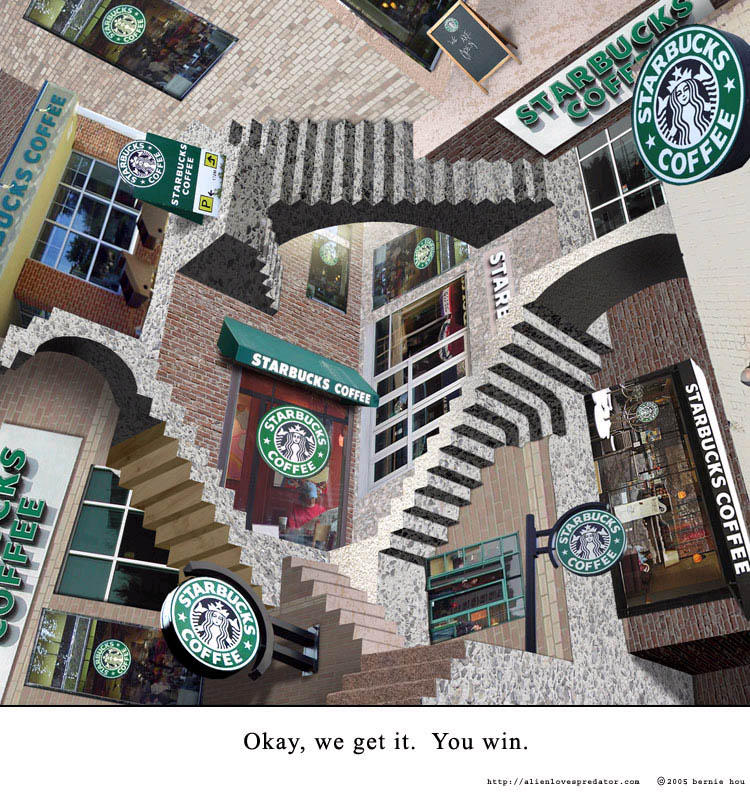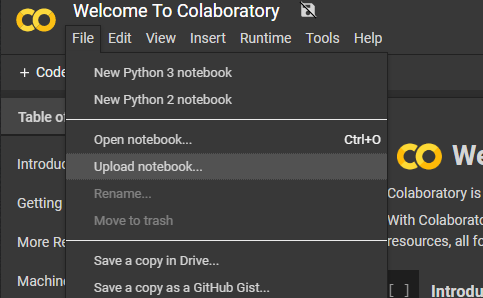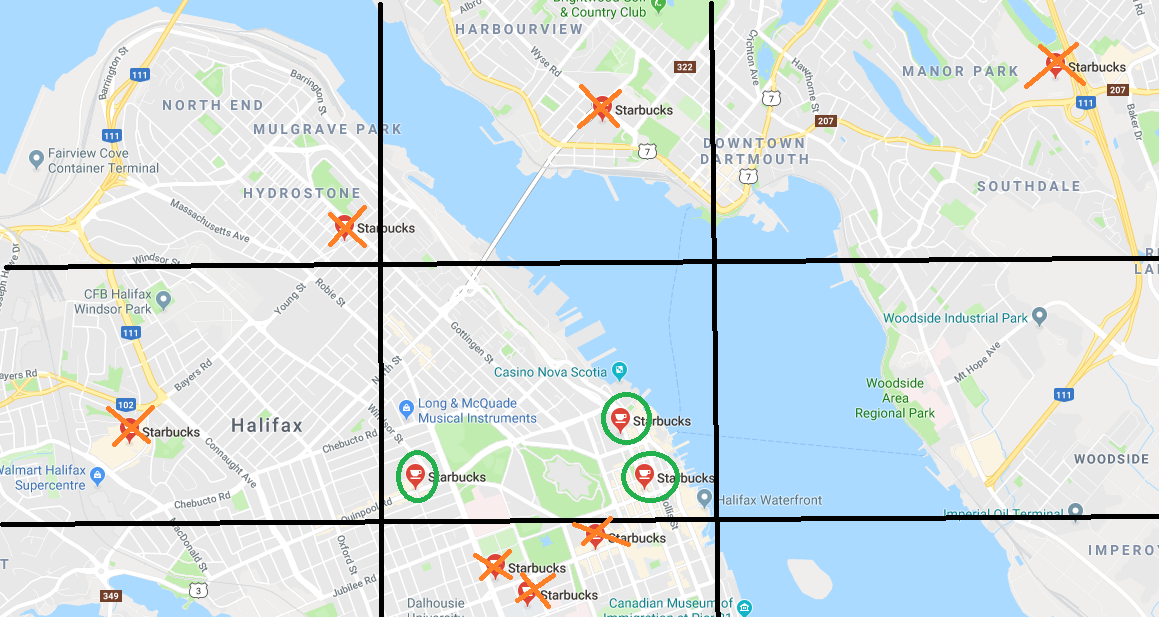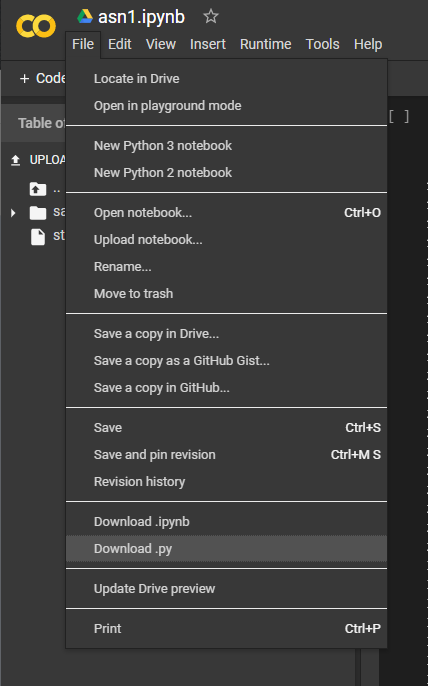Assignment #1: Density of Starbucks¶
Worth: 10%
DUE: February 20th 11:55pm; submitted on MOODLE.

Learning objectives:
Write some code
Solving a real problem/question
Thinking abstractly
Work with existing code
Understand existing code
Variables
Using functions
Boolean operators
Conditionals
Comments
Using your code to answer questions
Warning
For this assignment, you may work with one other student. Only one of you need to submit your work, but put both your names and student numbers! By all means communicate with each other at a high level (that’s good), but your code needs to be your own here.
Warning
You should not expect to be able to sit down and just start coding a solution. Computer science does not work this way. Expect this assignment to take hours. Expect to get things wrong, then, expect to get things wrong more.
In this assignment, you will use a real dataset containing the locations of all North American Starbucks Coffee houses (as of a few years ago) to compute the density of Starbucks on a given patch of the Earth’s surface.
To make life easier for the first assignment, you don’t have to start from scratch. I’ve already started a file for you to use as a template. This is also somewhat realistic for programmers; you don’t always start completely from scratch… Sometimes you’re trying to modify someone else’s code that you downloaded or inherited. Also, learning how to work with existing code is a huge way to learn.
Warning
Some students have reported their browsers (seems to only be chrome that’s being difficult) complaining about possible security issues. There isn’t any; this is just because the files are scripts and scripts CAN be problematic if they are intended to be troublesome (these are not). To get around this, tell the browser to download it anyways. There are a few ways to do this: (a) Click the arrow next to the download at the bottom of the page and say “Keep”. (b) Navigate to your browser’s download screen and select “Keep”.

Download the asn1.ipynb notebook and upload it to Colab to get started. See below image. WARNING: You should be sure to save a copy of this to your Google drive and then work with that one. You don’t have to, but you will have to re-upload the project every time you want to work on it.

Alternatively if you want, download asn1.py to get started if you want to not use Colab. Do whichever you want. It’s the same as the notebook file, just missing the notebook stuff.
The steps you need to do are laid out, in detail (and suggested order) below.
Warning
Do not alter the function details in the .ipynb/.py files:
Do not change the name of the functions
Do not remove the function description
Do not remove or add to the parameters
You should also NOT be using the input() function in this assignment.
You will also need the data file starbucks.csv. Download this to your computer and upload it to your Colab files (see below image). Unfortunately, every time you open your colab project, you will need to re-upload. Not a big deal, but something you will need to remember.
If you would like to not use Colab and work from your own computer, then just be sure to save this file in the same directory that you are saving your assignment in.

Complete Latitude/Longitude Conversion Function¶
Humans like to express latitudes and longitudes in degrees, minutes, and seconds. You could work with those units in Python, but your computations (and, hence, code) will be much cleaner if you convert to the single unit “degrees”, using decimals of a degree to represent arcminutes and arcseconds (don’t worry, I swear you that this isn’t that complicated).
Your first task will be to fill out the code for the function convert_to_decimal(). The parameters are a latitude (or longitude) in degrees, arcminutes, and arcseonds. The function should return the same latitude (or longitude) as a single value in decimal degrees
(a single value of type float). If you’re not sure how to compute the conversion, do some reading.
Have a peek at the data-loading function¶
The function that loads the data is a freebie. It contains some stuff we haven’t discussed in class yet, but it’s pretty simple to figure out what’s going on if you look at it and hack around. So… look at it. Get used to looking at code that isn’t yours, using unfamiliar ideas/idioms/patterns, and trying to figure out what it does. This isn’t always simple (sometimes it’s very hard), but you’ll spend a lot of time doing it (whether you want to or not!).
This data in the .csv file is fortunately already in decimal format so you will not need to convert it with convert_to_decimal(), however, you still need to do part 1 and make sure it works properly even though you might not actually use convert_to_decimal() for the below parts!!!!!!
Warning
This .csv file MUST be in the same directory as your python script!!!! This means in your Colab project or in the same directory on your computer if you are doing it not on Colab. If it is not, this function will NOT work!!! You’ll see something like No such file or directory: 'starbucks.csv' if you don’t have the file in the right place.
Complete the function to compute lat-long rectangle area¶
We want to compute the density of Starbucks, not just the raw number of them. A reasonable measure for this is ‘Starbucks per square kilometer’. To compute this, we first need to know how to find the area of a lat-long rectangle. The function subtended_area() takes as parameters the ‘bottom left’ and ‘top right’ corners of a lat-long rectangle (or, the left and bottom lines, and then the right and top lines). It should return the area of that lat-long rectangle in square kilometers.
To save you some solid angle computations: given two lat/long pairs, the formula to compute the subtended area is:

where R is the radius of the sphere (Earth in this case: 6378.1 km).
Warning
Do Python’s trig functions (e.g. math.sin or numpy.sin) expect parameters in degrees or radians? Be careful!
Complete the function that counts the number of Starbucks in a region¶
Counting up the number of Starbucks in a given area. The function num_starbucks() is already set up to loop over every Starbucks location in a list. All you have to do is remember to pass in the list. Have a look a the loop. Even if we haven’t formally discussed this structure in class yet, it should be pretty clear what it’s doing.
Note
Fortunately, the data coming in is already in decimal format, so there is no need to actually convert these values with the convert_to_decimal function.
Your work is in the body of the loop. Each time through the loop we’ll be considering a new Starbucks location. The existing code will put the current location’s latitude in loc_lat and longitude in loc_lon. Your job is to figure out if this location falls in the area between the lat/long pairs defining your region. If this location is within the box defined by the lats and longs then it is in our defined region and we need to count it.
You need to keep track of how many Starbucks there are in the region and then return that value.

If the existing code is scaring you, think about it this way:
There exists a robot that needs to be programmed
The robot will receive a new Starbucks location, one after the other, until there are no more locations. (already coded for us)
Robot will take the location, and
IFthe location is within the rectangle we care about, we count it, otherwise, ignore it. (we need to code this bit)
Finally¶
Finally, fill in a convenience function starbucks_per_kmsq() which, given subtending lat/long pairs, returns the density of Starbucks.
TODO:
Use
load_asn1_data()to load the locations and store them in a variable.Compute the number of Starbucks in the region
Compute the size (area) of the region
Divide number of Starbucks by area to get density
return density
Now try it!¶
Try your code. Try small regions and big regions. What area has the highest Starbucks density you can find? The lowest? Make sure to print them out.
What to submit to Moodle¶
Submit your work on Moodle.
Your version of
asn1.py. Do not submit the .ipynb file. To get the asn1.py file from Colab, see the image below.Make sure your NAME and STUDENT NUMBER appear in a comment at the top of the program.
List anyone you worked with in the comments, too
- A text file describing the areas you found with the highest, and lowest, Starbucks densities and a short description of how you found them.
Don’t worry about finding the HIGHEST or LOWEST density, just try a few and pick your highest and lowest.
VERIFY THAT YOUR SUBMISSION TO MOODLE WORKED! IF YOU SUBMIT INCORRECTLY, YOU WILL GET A 0

Some hints¶
Work on one function at a time.
Get each function working perfectly before you go on to the next one.
- Test each function as you write it.
This is a really nice thing about programming: you can call your functions and see what result gets returned. Does it seem correct?
If you need help, ask! Drop by my office hours.
Some marking details¶
Warning
Just because your program produces the correct output, that does not necessarily mean that you will get perfect, or even that your program is correct.
Below is a list of both quantitative and qualitative things we will look for:
Correctness?
Did you follow instructions?
Comments?
Variable Names?
Style?
Did you do just weird things that make no sense?
General FAQ:¶
- Does my text file have enough details?
Probably. The shorter the better. I really just want to see that you played around a little.
- I don’t know how to do X.
OK, go to google.ca and type in X.
- It’s not working, therefore Python is broken!
Probably not; you’re very likely doing something wrong
- My thing keeps telling me
No such file or directory: 'starbucks.csv' Then the starbucks file probably isn’t where python is looking.
- My thing keeps telling me
- Is my area a high/low enough density?
I really don’t care how high/low it is. Just try a few things and see what you get.
- Do I have enough comments?
I don’t know, maybe? If you’re looking at code and have to ask if you should comment it… just comment it. That said, don’t write me a book.
- Can I work with my friend?
Yes, with at most one friend.
- I know I cheated, but I’m really sorry [that I got caught]. Can we just ignore it this time?
No
- If I submit it at 11:56pm, you’ll still mark it, right? I mean, commmmon!
No. 11:55pm and earlier is on time. Anything after 11:55pm is late. Anything late is not marked. It’s rather simple really.
- Moodle was totally broken, it’s not my fault it’s late.
Nice try.
- I accidentally submitted the wrong code. Here is the right code, but it’s late. But you can see that I submitted the wrong code on time! You’ll still accept it, right?
Do you think I was born yesterday? No.